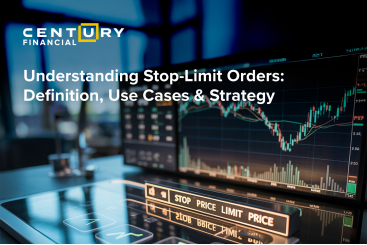Friday, July 07, 2023
5 key ratios to assess financial health of a company
تم إعداد هذا المنشور من قبل سنشري للاستشارات


Synopsys:
Analyzing financial statements is essential for stock investing. Key ratios like EPS, P/E, P/B, D/E and ROE provide insights into a company’s profitability, value, leverage, and financial health. Understanding these ratios helps investors make informed decisions and avoid pitfalls.
Investing in company stocks is like solving a puzzle, and financial statements hold the clues.
Over the past few years, investing in stocks has become a popular passive method of growing wealth and achieving financial goals. However, not all companies have similar streams of revenue, costs and many other characteristics.
So, this brings up the question of how to identify the companies that an investor should consider and which ones should be avoided.
Reading and interpreting financial statements can be challenging for many investors, especially those who are not familiar with accounting concepts and terminology. That’s why it’s helpful to use some financial ratios to simplify and evaluate the data in the statements.
Here are some financial ratios that investors should know before investing in a company’s stock.
1. Earnings per Share (EPS)

Earnings per share (EPS) is a measure of how much profit a company makes for each share of its common stock. EPS indicates how profitable a company is and how much dividend it can pay to its shareholders.

For example, if a company has a net income of $10 million and 100 million shares outstanding, its EPS is $0.10 ($10 million / 100 million).
Generally, a higher EPS means a higher quality of earnings and a more attractive stock. Investors should look for companies that have consistent and growing EPS over time, as this indicates that the company is increasing its profitability and generating more value for its shareholders.
Further, it is considered better when a company beats analyst EPS expectations in its quarterly earnings report.
2. Price-to-earnings ratio (P/E)
Price-to-earnings ratio (P/E) is a measure of how much investors are willing to pay for each dollar of a company’s earnings. P/E indicates how expensive or cheap a stock is relative to its earnings.

For example, if a company has an EPS of $0.10 and its share price is $2, its P/E is 20 ($2 / $0.10).
Generally, a lower P/E means a cheaper stock and a higher P/E means an expensive stock. Investors should look for companies with low P/E ratios compared to their peers in the same sector or industry, as this indicates that they are undervalued and have more room for growth.
3. Price-to-book ratio (P/B)
Price-to-book ratio (P/B) is a measure of how much investors are willing to pay for each dollar of a company’s book value. Book value represents the amount shareholders would receive if the company were liquidated today. Book value per share is the ratio of equity available to common shareholders divided by the number of outstanding shares. P/B indicates how much value investors assign to a company’s assets relative to its liabilities.

For example, if a company has a book value per share of $1 and its share price is $2, its P/B is 2 ($2 / $1).
Generally, a lower P/B means a cheaper stock and a higher P/B means an expensive stock. Investors should look for companies with low P/B ratios compared to their peers in the same sector or industry, as this indicates that they are undervalued and have more hidden assets than liabilities.
4. Debt-to-equity ratio (D/E)

The debt-to-equity ratio (D/E) is a measure of how much debt a company uses to finance its operations relative to its equity. D/E indicates how leveraged or risky a company is.

For example, if a company has total debt of $50 million and total equity of $100 million, its D/E is 0.5 ($50 million / $100 million).
Generally, a lower D/E means less debt and less risk, and a higher D/E means more debt and more risk. Investors should look for companies with low D/E ratios compared to their peers in the same sector or industry, as this indicates that they have fewer financial obligations and more financial flexibility.
5. Return on equity (ROE)
Return on equity (ROE) is a measure of how much profit a company makes for each dollar of its equity. ROE indicates how efficient or profitable a company is.

For example, if a company has a net income of $10 million and total equity of $100 million, its ROE is 10% ($10 million / $100 million).
Generally, higher ROE means higher profitability and lower ROE means lower profitability. Investors should look for companies with high ROE ratios compared to their peers in the same sector or industry, as this indicates a more competitive advantage and earning power.
Parting Thoughts
In conclusion, analysing financial statements before investing in a company’s stock can help investors make better investment decisions and avoid costly mistakes.
Further, an investor must do his/her due diligence and conduct sector-wide research to zero in on selecting the companies that show comparatively better financial health status.
Remember, there is no one-size-fits-all formula for investing, but rather a process of continuous learning and improvement. Happy investing!
*Information can be found in the annual report of the companies
لا تقدم شركة سنشري للإستشارات والتحليل المالي ش.ذ.م.م (الشركة) محتوى هذه المدونة، بما في ذلك أي أبحاث أو تحليلات أو آراء أو توقعات أو أي معلومات أخرى (يُشار إليها مجتمعةً باسم "المعلومات")، إلا لأغراض التسويق والتثقيف وإتاحة المعلومات العامة. ولا يُفسَّر ذلك على أنه نصيحة استثمارية أو توصية أو دعوة لشراء أو بيع أي أدوات مالية.
كما يجوز نشر هذه المعلومات عبر قنوات مختلفة، بما في ذلك موقع الشركة الإلكتروني، ومنصات الغير، والنشرات الإخبارية، والمواد التسويقية، ورسائل البريد الإلكتروني، ووسائل التواصل الاجتماعي، وتطبيقات المراسلة، والندوات الإلكترونية، وغيرها من وسائل التواصل. وبينما تسعى الشركة لضمان دقة المحتوى، فإنها لا تضمن اكتماله أو موثوقيته أو تحديثه في الوقت المناسب. وعليه، فأي قرارات تُتخذ بناءً على هذه المعلومات تكون على مسؤوليتك الشخصية. ولا تتحمل الشركة أي مسؤولية عن أي خسارة أو ضرر ناتج عن استخدامها.
ينطوي تداول المنتجات المالية على مخاطر كبيرة، بما لا يتناسب مع جميع المستثمرين. فيُرجى التأكد من وعيك التام بالمخاطر، وطلب الاستشارة المهنية المتخصصة إذا لزم الأمر.
يُرجى الاطلاع على بيان كشف المخاطر الشامل المتوفر على موقعنا الإلكتروني.
















